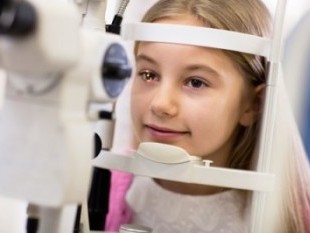UMMS Student Tests Retinoblastoma-Detecting Smartphone App in Guatemala
The global medical community is uniting to battle pediatric retinoblastoma. Nitin Shrivastava, a student at the University of Maryland Medical System’s School of Medicine, is collaborating with an international team of clinicians and researchers in Guatemala to help battle this deadly cancer.
The application is designed to help detect leukocoria, or “white eye.” Leukocoria has recently become a key in identifying retinoblastoma, as this symptom is often present before the child experiences more severe symptoms.
CRADLE App
 The app is called CRADLE, which is an acronym that stands for “Computer Assisted Detection of Leukocoria.” It’s also referred to as the white eye detection app. It allows for rapid, low-cost detection of leukocoria in areas of the world where resources are more limited and ophthalmoscopes are more difficult to obtain.
The app is called CRADLE, which is an acronym that stands for “Computer Assisted Detection of Leukocoria.” It’s also referred to as the white eye detection app. It allows for rapid, low-cost detection of leukocoria in areas of the world where resources are more limited and ophthalmoscopes are more difficult to obtain.
How it Works
The app essentially converts a smartphone’s LED and video camera into a computer-assisted ophthalmoscope. It analyzes each frame, recording in realtime, and highlights signs of leukocoria with red boxes.
The Birth of the White Eye Detector App
The app was created by an American engineer Bryan Shaw, whose son’s photos showed white eye starting at around 12 days of age. However, his family didn’t realize the severity of the issue, and baby Noah wasn’t diagnosed until he was three months old. At that point, he required three months of chemotherapy treatment, 30 radiation cycles, and the surgical removal of his right eye.
Shaw developed the app to help families recognize and diagnose retinoblastoma as soon as possible, so they never have to experience what Noah did.
Retinoblastoma in the Developed World
 In America, the five-year survival rate of this rare form of cancer is roughly 94%, due to routine leukocoria screening during regular checkups for newborns through five years of age. The standardization of this precaution has helped to diagnose many retinoblastoma cases early, which in turn significantly improves the prognosis for affected children.
In America, the five-year survival rate of this rare form of cancer is roughly 94%, due to routine leukocoria screening during regular checkups for newborns through five years of age. The standardization of this precaution has helped to diagnose many retinoblastoma cases early, which in turn significantly improves the prognosis for affected children.
Why Guatemala?
However, in Guatemala, most cases metastasize before patients receive a diagnosis and appropriate treatment. As a result, Guatemala sees a five-year cure rate of just 30%. The app is a revolutionary way to use portable technology for a positive impact on Guatemalan healthcare and childhood health.
Additionally, Guatemala’s capital is home to Unidad Nacional de Onvologia Pediatrica, a pediatric cancer hospital with world-class status and the resources needed to treat Guatemalan children diagnosed with the disease.
These two facts illustrate that Guatemala is an ideal country to introduce CRADLE and set the stage for more accurate and powerful retinoblastoma management around the world.

















